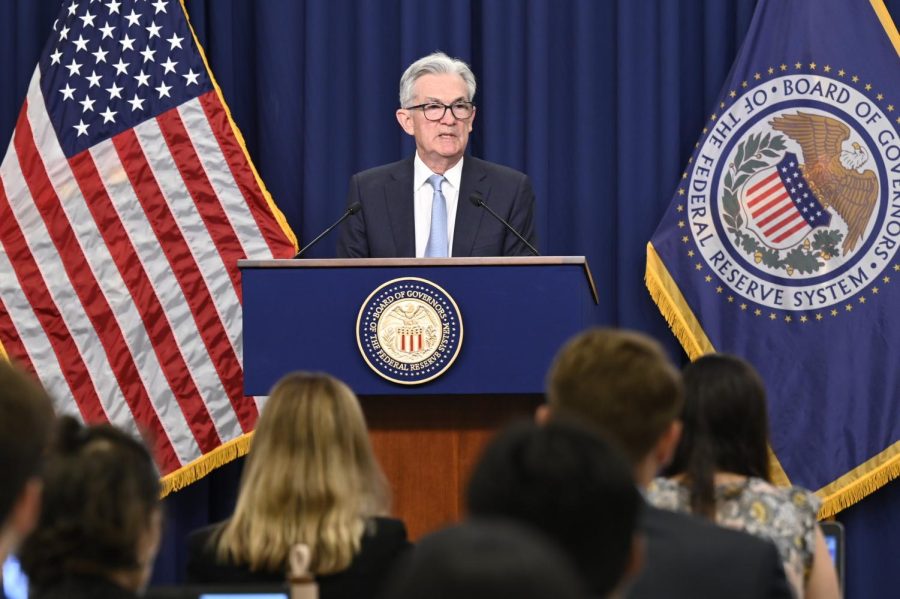Federal Reserve hikes rates at anticipated June meeting
July 3, 2022
The Federal Reserve wrapped up another meeting on June 15, announcing a new hike in interest rates.
Just a month ago, the Fed’s Open Market Committee announced its second rate hike of the year, an increase by half a percentage point in response to an 8.5% inflation rate, which has reached its highest point in 40 years.
At its recent June meeting, the Fed announced a 0.75 percentage point increase, bringing the range for the federal funds rate to 1.5% to 1.75%, the largest increase in 40 years.
Inflation remains at an all-time high, and forecasts project it may continue to trend upward later this year and into next.
The war in Ukraine continues to add upward pressure on the global energy supply. Coronavirus-related lockdowns in China are still confounding disruptions in global supply chains. Supply and demand imbalances related to the pandemic remain, according to a statement released by the committee.
Increasing demand for travel remains despite rising energy prices, adding more pressure on overall prices. To many, this seems to be the perfect recipe for inflation.
“Overall spending is very strong,” Fed Chair Jerome Powell said in a post-meeting news conference. “The consumer is in really good shape financially. They’re spending.”
The rate hike will remain with the goal of alleviating inflation, but ample room is still left for uncertainty in market behavior.
Toward the end of this year, consumers and market participants can expect to see high prices on everyday goods. Savings rates and credit card rates will also be affected by this rate hike.
Mortgage loans are not directly affected by this rate hike, but they will be impacted by Treasury bond yields, which are projected to increase.
The Bureau of Labor Statistics reported an all-time high index in consumer prices of 8.6% this May, compared to the same time last year. This is the largest increase in the same period since December 1981.
Officials are projecting the federal funds to reach between 3.25% and 3.5% by the end of this year.
To cool off inflation while also preventing an economic recession, people are hoping for a “soft” landing, but that appears to be difficult to achieve.
The committee is still determined to bring the inflation rate back down to its long-term goal of 2%, but many officials believe this to be unrealistic.
“It’s going to be a far bumpier ride to get inflation down than what they had anticipated previously,” Matthew Luzzetti, chief U.S. economist at Deutsche Bank AG, told the Associated Press.
The federal funds rate was expected to increase but not by 0.75 percentage points. This increase left citizens tentative about the Fed’s hand in combating inflation.
Both the high inflation rate and the Fed’s slow but aggressive response to it are causing investors and market participants to become more apprehensive of the central bank.
The stock market, bond market and cryptocurrency market all took a hit following the Fed’s announcement.
The S&P 500 broke its five-day losing streak, rising 1.5%. A sell-off pushed government bonds to rally into decade highs, following weeks of decline.
Market participants’ expectations may be a strong indicator of future economic conditions. Long-term inflation is expected to remain high in anticipation of a sluggish economy.
While the Fed continues receiving criticism for its stimulus package relief program during the pandemic, the committee’s efforts in reducing the size of the Fed’s balance sheet proceed, as they disclosed in May.
Its plan includes reducing its Treasury securities and agency debt alongside mortgage-backed securities.
The committee is prepared to adjust its monetary policy as fit in response to further disturbances in the market, both domestic and international, it said in a press release.







